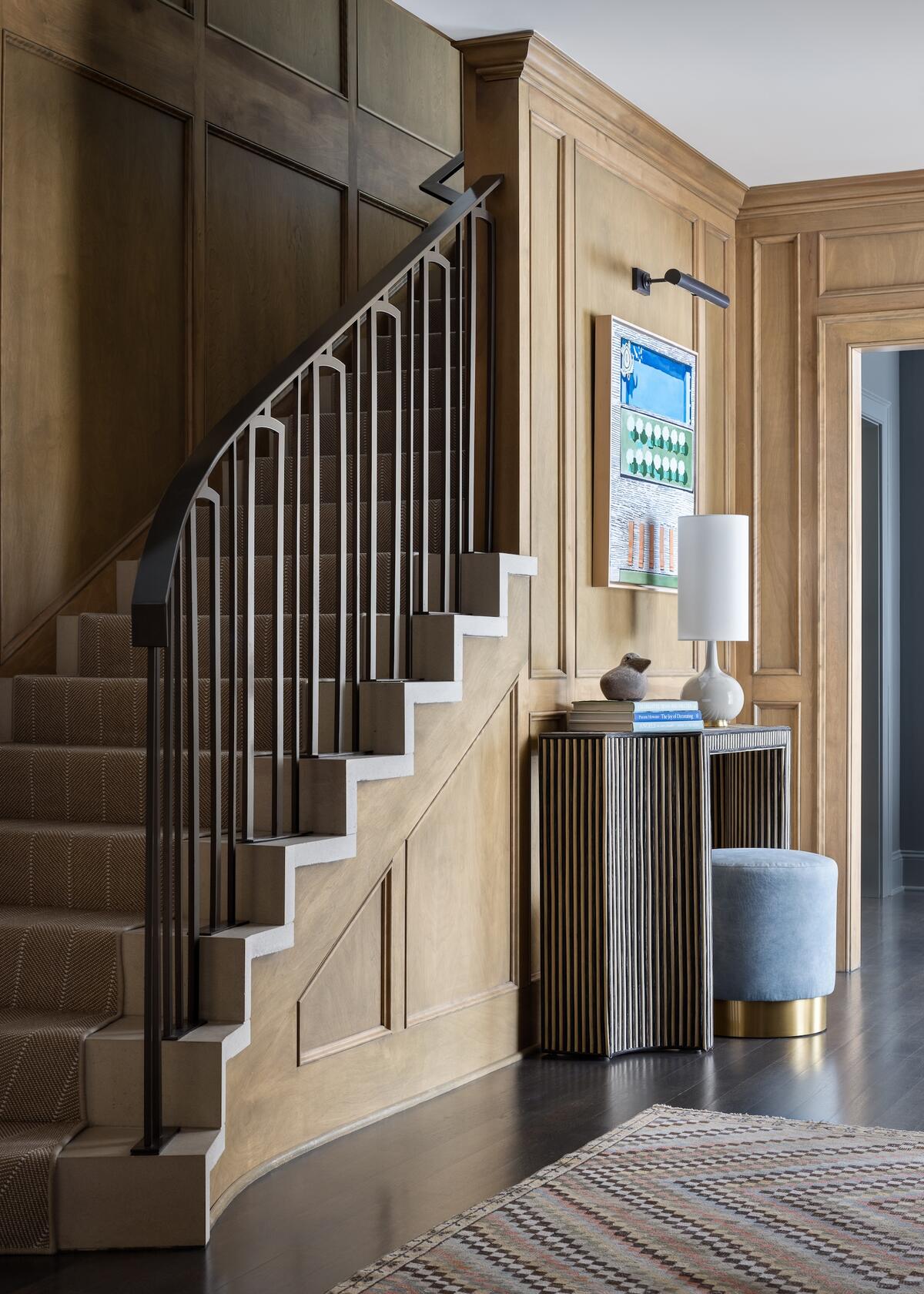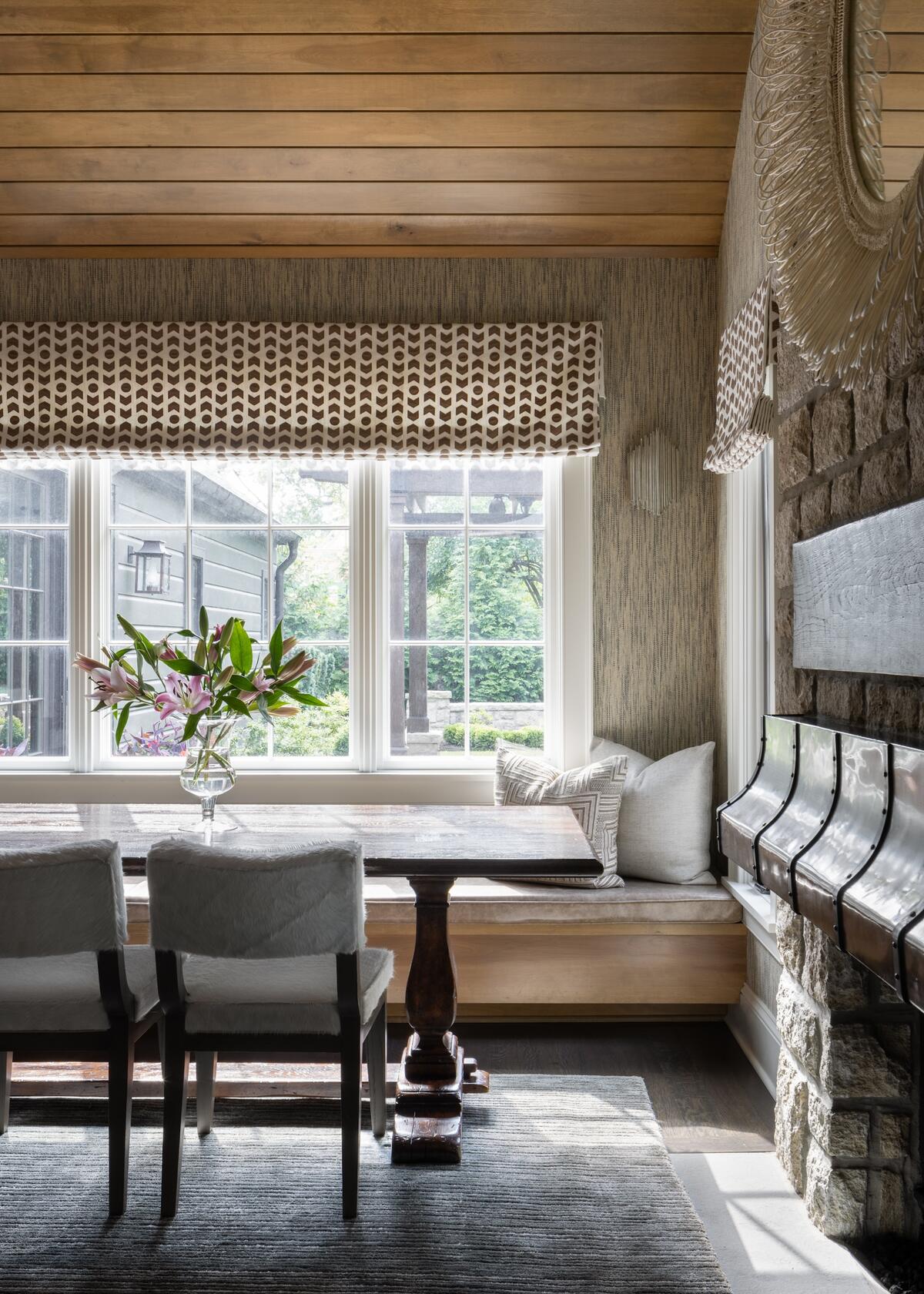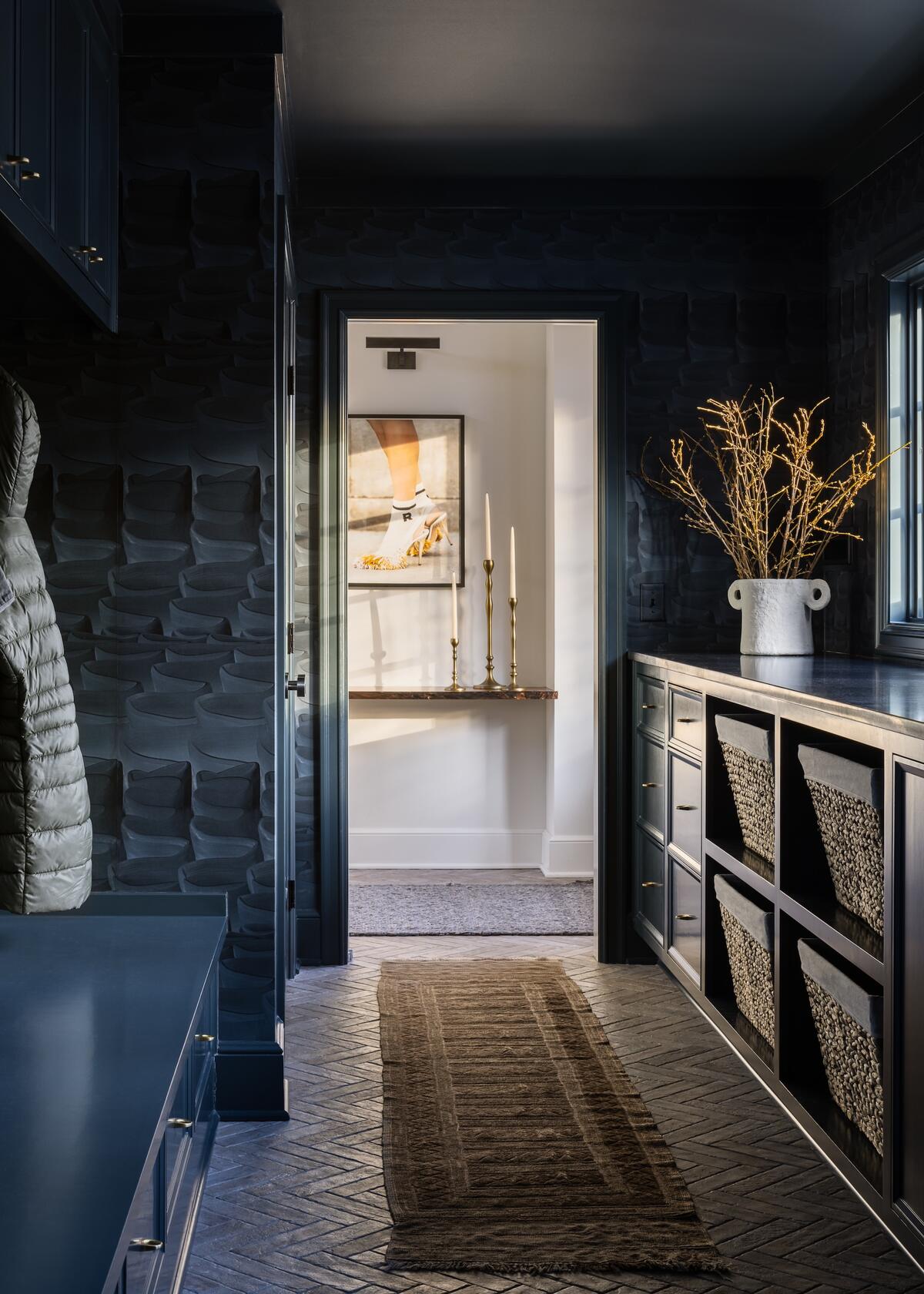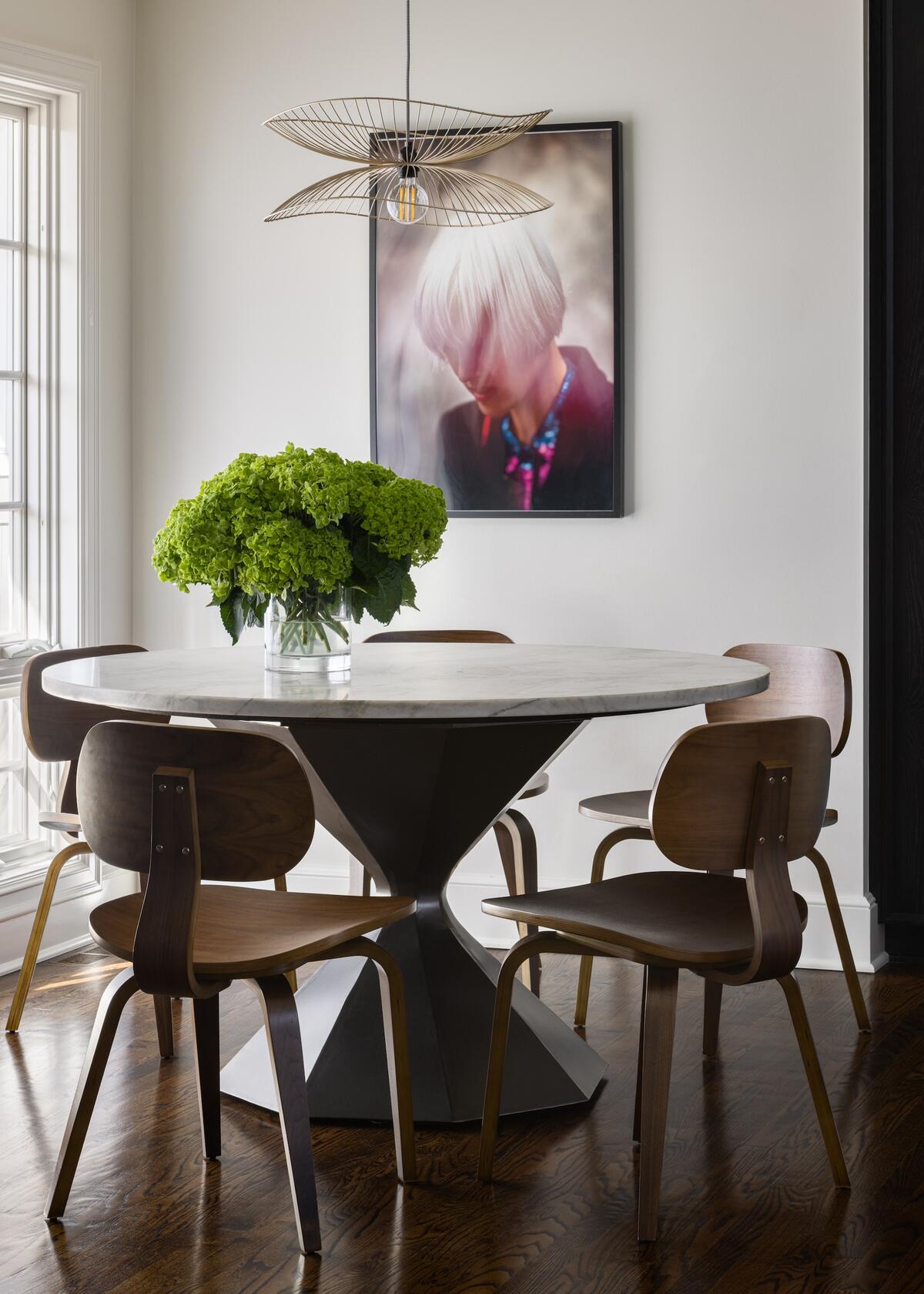The 50 States Project is a series of candid conversations with interior designers across the country about how they’ve built their businesses. This week, Prairie Village, Kansas–based designer Sarah Chaffee of Weltner Interiors tells us about working on a method for doing smaller projects profitably, how she grows her business without sacrificing her home life and why she prioritizes portfolio photography far above social media posts.
I want to start at the beginning: What inspired you to launch your business?
I have loved architecture and design since I was a little kid. I would doodle floor plans on my school homework. In sixth grade, they had us draw a picture of ourselves as an old person—mine was me with wrinkles on my face, and behind me was a building that said, “Weltner Architecture.”
I went to architecture school, started working for an architecture firm, then went and did a random job that wasn’t in the design field. While I was there, a past client reached out and asked me to help them with some finishes and furniture for their house, and I loved it. I have a very distinct memory of my now-husband sitting on the couch one evening and saying, “You should start your own business. You love it—just do it.” And so I did. That was about 10 years ago in March, and I never looked back.
What does your business look like today?
The actual business has stayed pretty consistent over the last 10 years—it’s me and one other person. I had an office for the past six or seven years, but just recently got rid of it because I was never using it. That’s actually been a big change for me, to not have an office space outside of my home, which I’m really liking.
What prompted that?
My focus on my kids has always been big, but it’s almost like they need me more in some ways as they’ve gotten older, so being able to work from home has been amazing.
I’m also leaning into a future in product and retail. I’m really intrigued by this niche of clients who aren’t looking to do a full remodel or full new build—they don’t want to spend hundreds of thousands of dollars on design fees and furniture—but they still want to have a bespoke space. That’s the demographic of a lot of my friends and neighbors in my community, so I’m literally in the midst of figuring out how I could fill that niche for someone.
Tell me more about that. How are you imagining working with those clients?
I think part of it is being really clear about, “Here’s exactly what I’m going to give you and these are the deliverables,” and making it very user-friendly for them. Maybe I’m going to come over for one meeting, I’m going to put together a design board, and then I’m going to send you everything you need to do in order to turn that into reality. That way, they can get the look without paying the full-service design fees. It also may be more about enjoying the smaller projects, where someone just needs help with one or two rooms, and it’s working with what they have instead of buying everything new.
Does that feel limiting in some ways?
I’m someone who actually really likes some parameters on a design—my favorite type of project is a remodel where we want to infuse some of the original character of things, or someone has a really special piece that can inspire the whole room. To me, a blank slate is almost intimidating. I like having something to jump off from.
Do most clients have something that is that spark?
Most of the people I’ve been working with do. It doesn’t always have to be a furniture piece—I had one client whose living room was this big space with a black-and-white marble tile floor. It almost had this ballroom vibe, but it was their living room. The uniqueness of something like that gets me excited. Another client is Persian, and she has a lot of family antiques and unique pieces of furniture and art. For that project, it’s an interesting challenge to fit a more modern, family-friendly aesthetic and function with those types of pieces.

You said your team has been pretty consistent. When did you start hiring?
I’ve always done the design work and interfaced with the clients. The role that I’ve always hired for is a project manager—someone who’s behind the scenes creating proposals, procuring estimates, getting samples and coordinating with vendors for measures and installs. Until about a year and a half ago, my project managers were also doing all the purchasing and tracking all the deliveries; I recently hired [procurement service] DesignerAdvantage to do all of that instead.
How does that change the project manager’s role?
It took some of their scope away in terms of what they’re doing for a project, so that they can focus more on helping with marketing and client experience. On install days, that’s making sure we have all the things that we’re going to need, like carpet tape and lightbulbs. Or maybe it’s ordering personalized Yetis that we give out for the holidays—that sort of thing. I’ve never really marketed before, so I’m kind of like, “Maybe we should try that!” I’ve always gotten word-of-mouth [referrals], which has worked great—I grew up here, my parents are here, and I’ve got two sisters who live in town, so there’s usually some sort of connection with most of my clients—but it’s fun to dive into something new. Like, what would it look like if we did try some marketing?
What kind of growth are you looking for?
At the end of the day, I always want to increase revenue, but it’s really important for me to do that in a way that doesn’t take me away from my first priorities, which are my family and my home life. Growth to me is finding a way to scale that doesn’t include sitting in front of the computer doing more design hours.
I almost bought an online showroom company at one point, and I’ve toyed with lots of different ideas over the years. I don’t love managing people, so the idea of having a bunch of designers under me doesn’t sound fun. So it’s like, how do I build this business without doing that? Someone who I really aligned with on that topic is [Indiana designer] Whittney Parkinson. I love how she really holds her family first and business second, and the idea that the joy of being an entrepreneur is that your business can look any way you want it, even if that means going against the grain sometimes. Like, no, I don’t want an office anymore. Or maybe I’m going to have a kid with me when I’m checking on a wallpaper install. You can attract clients that work for you, and then it just makes it more enjoyable.


If marketing has never been a big focus, what role has social media played in your business?
I’m sure you can tell from my Instagram that it has not been a big focus for me. I have a real love-hate [relationship] with Instagram. I see its value, but I also see all these designers with these much bigger followings than me who are ranting about the algorithm. What I take from that is: Do I want to spend my time focusing on trying to get my post seen, or is it more beneficial to be where my feet are and focus on what’s in front of me? I think it’s a great tool, and when people use it well, they’re killing it, but I just can’t get myself to really put in the effort. I’m all about efficiency, and I just feel like if I can spend my time creating something for a client that will get me farther than an Instagram post, then I’m going to go do that.
That’s such a refreshing perspective.
I also want to be off my phone more. I’ve actually considered adding to my Instagram bio so it says, “I’m not good about updating this, but I’m still working.” People think if you’re not posting all the time, you’re not doing projects. I want to be like, “No, I am! I just don’t post about it, because I just don’t want to.”
Are you still building a portfolio and photographing your work?
Absolutely, and I think photography is huge. That’s the one place where I’ve really invested in my firm, is making sure I work with great photographers who make the work sing. I got behind on getting stuff photographed in the past few years, so I’m actually in the process of scheduling a bunch of shoots right now.


Tell me about the Kansas City design scene: Who are the clients, and what kind of projects are they bringing you?
It’s a lot of young families doing remodels. Most of my clients are kind of in the same world I am, with toddlers to elementary-school-aged kids, and then there are some empty-nesters who are looking to refresh their home.
There’s a neighborhood around here that has a lot of gorgeous, more historical homes—if someone is buying [one] of those, [it likely] needs to be updated top to bottom. There are also pockets where the lots are smaller, so the homes need additions to fit a modern family. With most of the homes I work on, there’s some sort of architectural component that has either been done before I get there, or that needs to be done. I really enjoy when someone has a space planning issue that I can work on, and it’s fun to be able to tweak architectural plans to actually work for the family that’s going to be living there.
What resources are available locally, and where else do you source?
I do just about everything online. There are a couple of showrooms here if I need to source fabrics, but this is otherwise not a market that has a bunch of big furniture stores or anything like that. I staged a couple of condos down in Naples, Florida, a few years back, and they had a [multiline] showroom there where I could literally walk through in a day and pick everything out. There’s not that option here, so it’s all online.
Markets like High Point or Round Top help, too. I haven’t been to either of those in a number of years—life with little children makes it hard to get out of town for that kind of stuff—but that’s on my list to get back to in the fall or next spring. It’s so good to be able to sit in all of the upholstery pieces and see all the finishes in person, just to be able to give that trust to the clients that I know exactly what I’m specifying for them. It’s also a good way to be exposed to the business outside of working with clients day to day.
But clients aren’t experiencing the furniture before you order it.
That’s right. The client has to be comfortable handing over control of the process. The most successful project is when a client can let you really do the work without micromanaging it. And I think that’s just a personality trait in the client: Do they trust others to do what they hired them for?
How do you filter for that?
It’s very easy in a first meeting to catch a vibe. I’ve gotten to be very upfront at the beginning: This is how I work, this is the budget it’s going to take. I’m also really clear that if I’m not the right fit for you, that’s OK. I’m asking questions like, “How do you see us working together? Does this process work for you?” Or “What things are you lasering in on that maybe don’t feel comfortable to you, and why?”


Let’s talk about budgets. How have you approached billing for your work?
Before I meet with a [prospective] client, I’ll send over a welcome package that explains how they pay me. We charge hourly, plus a markup on purchasing, and we make it very clear that you have to pay the full invoice before we purchase anything—so they’re already going into a first meeting with me [knowing] that. After the meeting, I put together an agreement, as well as a project budget and estimate with a timeline. That, to me, has been the most important thing, and something I’ve tried to tailor a little bit more over the past few years, so that we have a [realistic] number at the beginning of the project that we’re trying to hit.
What were you fine-tuning in that process?
I think the biggest thing that has evolved is I am better about giving estimates on our hours, and to be as open and transparent about a client’s budget way upfront, because I don’t ever want to send an invoice or a purchasing proposal that is going to blow their socks off. That’s uncomfortable for me, too, you know?
I hate billing and making invoices, so a big challenge is that I’ll put my time in, but then I’ll get behind on actually sending out invoices. It’s just always the last on the list to get done—client things always jump ahead, and then suddenly it’s like, “Oh, I need to send hourly invoices for the past two or three months.” Getting them sent out is the biggest challenge because I’m just focused on other things, but I just hired a new accountant, so I’m hoping that’s going to help streamline that for me.
How do you talk about markup with clients?
Some clients are fine with it and don’t ask any questions, and other clients really struggle with it. I always explain that when you buy something at a clothing store, or Pottery Barn, or Target, or anywhere, they are buying something from a manufacturer and then they’re marking it up to sell it to you. What I’m doing is no different—I see my business as the hourly design services, and then it’s almost like I have a store where I’m selling furniture, decor and art. And the way I do it, you never pay above retail—when I get a really great designer discount, then I’ll have a little higher markup, but if I only get a 10 percent discount somewhere, I won’t even put a markup on it because I still want them to get some value from that.
But also, I believe the value you’re getting when you’re hiring a designer isn’t in getting everything cheaper—it’s getting a finished space that elevates your everyday living. When someone comes to me so that they can get furniture cheaper, that’s a red flag, because that means they’re not seeing the value in the service that we’re providing. I feel strongly about that.
You mentioned exploring new arms of your business—product and retail, as well as the lighter-lift consulting on projects for clients who want to DIY their renovation. What’s pushing you in that direction?
Over the last three-plus years, [I’ve noticed that if a project is] not with the right clients, I find myself getting a little fatigued by [the service side of] it. I enjoy the process of seeing things turn over faster. So that’s one part of it.
The other is this feeling like there’s so much sameness. You can see the same chair 60,000 times all over Instagram at all different price levels. Someone does it really expensive, and then it’s redone by Target, and it all looks the same. I want to figure out how we can infuse more bespoke pieces that have some character, but keeping them at a price point that makes them attainable for everyone. I find myself being drawn to the light fixtures that are all $20,000-plus and that’s just not realistic for everyone. And I don’t think good, unique design should only be for people who can spend $20,000 on a light fixture, either. So the niche that I want to hit moving forward with both design services and with product is being able to create unique, bespoke pieces at attainable levels. I’m hoping in six months, we can have another conversation about this product line that I’m dreaming of.
I’d love that! What does success look like for you today?
Success is having freedom to explore these ideas that are intriguing to me, and not being so [beholden] to whatever else I’m working on that I have to crank it out to keep making money. But it’s also about having the freedom to skip work and go pick up my kids and take them to the pool every Friday. That’s success to me too.
To learn more about Sarah Chaffee, visit her website or find her on Instagram.





























